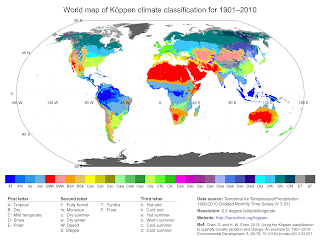 |
| Mykonos Greece |
African, and Aegean Sea plates. Currently the Aegean Sea plate is moving Southwest at speed of 30 millimeters per year. Right now Greece experiences earthquakes with a magnitude of 7 or lower on average due to the Southwestern movement of the Aegean Sea plate in relation to the Eurasian plate. In 10,000 years the Aegean Sea plate will have moved roughly 985 feet. This will cause many more frequent earthquakes but overall not much of a noticeable geographical shift. Simultaneously, the African plate is being sub ducted underneath the Aegean Sea plate at the speed of 40 millimeters per year. In 10,000 years this will equate to a movement of 1,312 feet. This will most likely contribute to more volcanic activity that currently is occurring in the Hellenic Arc.
 |
| Tectonic Plates That Greece Sits Upon |
In 1,000,000 years, the movements of these three plates will cause a much more drastic shift in geography. In 1,000,000 years, the Aegean plate will be moved 98,425 feet causing even more violent seismic activity and perhaps a rift being created between the Eurasian and Aegean plates. The most drastic changes will be taking place on the subduction zone of the African plate. The Hellenic Arc of volcanoes and island of Crete exists today because of this zone, so it is easy to see that in 1,000,000 years that volcanism will have vastly increased. More volcanoes and island chains will be springing up all over the plate subduction zone and along with them volcanic eruptions. These eruptions and seismic activity will cause both humans and animal life to move away from the area. The increase of sulfur dioxide and carbon dioxide in the atmosphere from these volcanoes will also cause for an increase in local surface temperatures.
 |
| The Island of Crete today. With further plate movement in 1,00,000 years, similar islands to this and many volcanoes will be created |
Finally, in 100,000,000 years, the subduction of the African plate will have greatly sub ducted beneath the Eurasian plate. This plate movement will cause a large amount of crustal uplift, creating new island chains, similar to the island of Crete and new arc's of volcanoes. These new volcanoes and lava flow will leave the earth with new geology and geography. Build up from volcanic lava flow will create new volcanic rock, while also eroding other areas. Older volcanoes that die and erode, like the original volcanoes from the Hellenic Arc that exists today, will most likely erode into volcanic necks and new craters form volcanic collapses.
While the future is uncertain and the it is impossible to predict what will exactly happen, we are given strong clues based on the current conditions of Greece and the knowledge that we have about plate tectonics and how land masses are formed from Geography 1202.
Photo Sources:
http://photos.adriatyk.com.pl/_adr_city/large/S/ADR-SANTGR-7.JPG
http://photos.adriatyk.com.pl/_adr_city/large/S/ADR-SANTGR-7.JPG
http://earthquake.usgs.gov/earthquakes/world/greece/images/greece_plates.gif
http://www.crete-kreta.com/files/u2/AgiiTheodori.jpg
Information Sources:
http://www.volcanodiscovery.com/hellenic-arc.html
http://eurasiatectonics.weebly.com/adriatic-and-aegean-plates.html
http://earthquake.usgs.gov/earthquakes/world/greece/tectonic_summary.php












